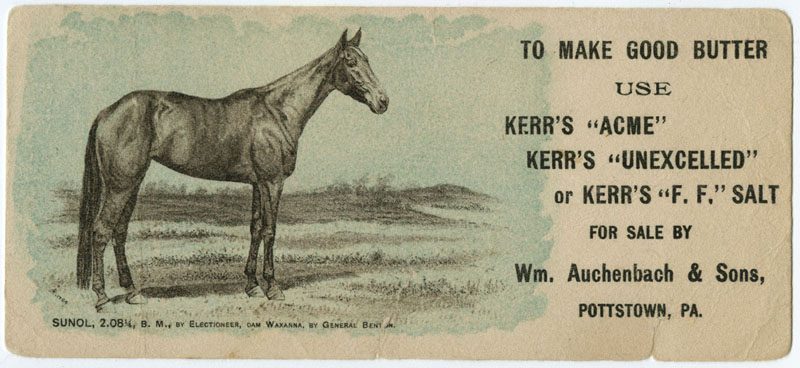Soaking Up History: Turn–of-the-Century Blotters in the Helen Beitler Graphic Ephemera Collection
Ink blotters, a relic of the age before ballpoint pens, epitomize the fleeting nature of the ephemera collections being cataloged through the Library Company’s current grant project. Essentially produced to become trash after their repeated use by fountain pen wielders to prevent ink smudges on paper, blotters also served as a medium for advertisements in the decades following their introduction to America in the 1850s.
![Myerstown Enterprise, Myerstown, Penna. Message by Mail. An Angry Message ([Myerstown, Pa.?], ca. 1895).](http://librarycompany.org/wp-content/uploads/CFavOct2011_Image-1-p-2011-10-40-1-800x396.jpg)
Myerstown Enterprise, Myerstown, Penna. Message by Mail. An Angry Message ([Myerstown, Pa.?], ca. 1895).
![A. E. Brown & Co., Manufacturers of Children and Infants' Shoes, Orwigsburg, Penna. ([Orwisburg, Pa.?], ca. 1890).](http://librarycompany.org/wp-content/uploads/CFavOct2011Image-2-p-2011-10-3-1-800x462.jpg)
A. E. Brown & Co., Manufacturers of Children and Infants’ Shoes, Orwigsburg, Penna. ([Orwisburg, Pa.?], ca. 1890).

To Make Good Butter Use Kerr’s “Acme,” ‘Kerr’s “Unexcelled,” or Kerr’s “F.F.” Salt for Sale by Wm. Auchenbach & Sons, Pottstown Pa. ([Pottstown, Pa.?], ca. 1890).
![The Philadelphia Wagon Manufactured by Rech-Marbaker Co. Girard Ave & 8th St. Philadelphia Pa. ([Philadelphia], 1913).](http://librarycompany.org/wp-content/uploads/CFavOct2011Image-4-p-2011-10-50v-1-800x345.jpg)
The Philadelphia Wagon Manufactured by Rech-Marbaker Co. Girard Ave & 8th St. Philadelphia Pa. ([Philadelphia], 1913).
![Cut-out on verso of The Philadelphia Wagon Manufactured by Rech-Marbaker Co. Girard Ave & 8th St. Philadelphia Pa. ([Philadelphia], 1913).](http://librarycompany.org/wp-content/uploads/CFavOct2011Image-5-p-2011-10-50-1-266x600.jpg)
Cut-out on verso of The Philadelphia Wagon Manufactured by Rech-Marbaker Co. Girard Ave & 8th St. Philadelphia Pa. ([Philadelphia], 1913).
People also “recycled” the blotters as in the case of these pieces, from 1913 and originally bound as a calendar, advertising Philadelphia wagon manufacturer Rech-Marbaker. Early nineteenth-century female fashion figure cut-outs have been pasted on the verso with typed captions commenting on their demeanor and dress, including “Most Bountiful.” Attired in an elegant, pink, high-waisted party dress with button details and lace trim, the label seems fitting for the exuberant young lady portrayed. Perhaps these repurposed blotters served as whimsical favors for a women’s luncheon or to amuse the young lady of the house as paper dolls.
Long out of use, blotters are often not recognized as such by contemporary generations. Easily mistaken as just advertisements, these practical and whimsical devices deserve a second glance for their unique historical research value.
Erika Piola
Associate Curator, Print and Photograph Department
